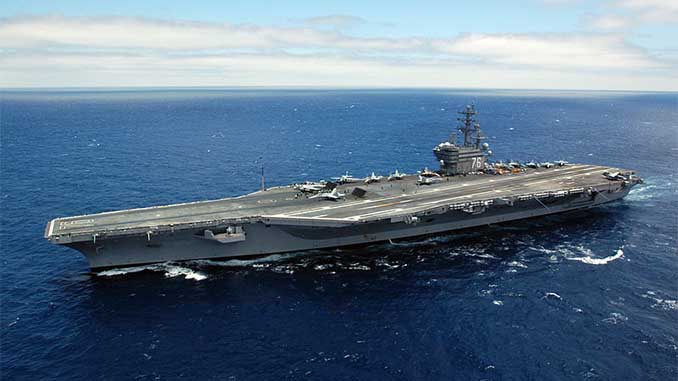If the United States of America is a superpower, China is a major revisionist power rising economically and militarily. The rise of China is motivated by what it sees as US Hegemony and is challenging that US Hegemony. The two powers have never been on friendly terms and both have diametrically opposite political and economic systems. Yet, they have never fought each other. What if a war breaks out between these two powers?
US President Donald Trump has made friendly overtures towards China – such as the overtures of his administration re-affirming the “one China policy”. China reciprocated the Trump’s Administration overtures by suspending for a year China’s export of coal to North Korea as a punishment for continuing its nuclear weapons testing, which angered the US administration and brought North Korea condemnation from the international community.
Despite the gestures of goodwill from the Trump Administration, China is unsure of Trump’s predictability, and in its own national security interest is taking steps to ensure its safety. China has ramped up its naval abilities and has at least one nuclear-powered aircraft carrier under construction with more planned. China seeks to check US dominance on the high seas and to increase its power projection capability across the world.
China’s navy has been playing a more assertive role in the past few months, with its first aircraft carrier sailing around Taiwan and new Chinese warships appearing in far off places.
It is worthwhile to mention that President Trump has promised a US shipbuilding spree, and this is unnerving Beijing. Beijing believes that with President Trump’s unpredictability approach on friction points such as Taiwan and the South and East China Seas, it needs to be prepared to fight, and win any engagement in Chinese waters. Because of this uncertainty as to the intentions of the United States under Trump, China is making efforts to decrease the gap with the US Navy.
Trump has expressed a wish to increase the number of the U.S. Navy ships to 350 from the present 290 as part of “one of the greatest military buildups in American history”. Aides said the step was aimed at countering China’s rise as a military power.
Meanwhile, Chinese warships have also been seen at ports in Pakistan, Bangladesh, and Myanmar. The development has made rival India nervous. “It’s power projection,” said a Beijing-based Western diplomat, of China’s navy.
If the war between the United States and China comes to pass, it may continue for a long time. To prevent the war, great diplomatic skills and political acumen will be needed. Diplomats and policymakers will have to remain alert and sensible to prevent that catastrophe.
The war between the two powers would change the geopolitics of East Asia. The immediate triggers can include disputes over Taiwan or North Korea, independence for Taiwan and North Korea’s confrontation with South Korea, a key US ally.
Moreover, there are other disputes in the East and South China Seas, as well as a possibility of a conflict with India along the Tibetan border.
An increase in China’s capabilities, its discomfort because of the US-led regional security system and its alliances with several regional states- all these things threaten China-US military clash.
Then in case of war, both the power blocks will also impose sanctions on each other and on their respective allies. That will harm not only the economy of these two countries but also will harm the trade and industries in the entire world.
Disputes in the East China Sea and the South China Sea could trigger a full-scale war. In that case, the US may get the support of Japan, Australia and the other regional states which are stakeholders in the sea disputes and are not comfortable with China’s rise.
For China, the best course will be to win over the US allies in the region so that a great amount of support to the US is blocked. To do so, Chinese policymakers and diplomats will have to ensure that these US allies still are neutral. That looks unlikely. However, a compromise on the sea disputes and Chinese assurance that the allies will not be harmed in future may tilt the scale in favor of China.
Speaking of the aims, the two countries would like to achieve through the military confrontation, it will be interesting to know who achieves what. China would aim at handing a crushing defeat to the US so that it’s hegemony comes to an end. It would also aim at weakening its defense, economy, and scope of future intervention.
The US would aim at containing China’s regional expansion. The US would also like to defeat and weaken China’s army so that it no longer remains a major challenge to it and its regional allies.
Above all, the China-US war would prove a catastrophe, more devastating than the Black Death (which had killed about 50 million people) and the two world wars. Let us hope that good sense prevails, and these two powerful countries see an improvement in their ties. If that happens, the world will free itself of several problems, issues, and challenges.

Sheikh Shabir Kulgami is a Kashmiri (Indian) political commentator, analyst and columnist. He writes extensively on South Asia.


